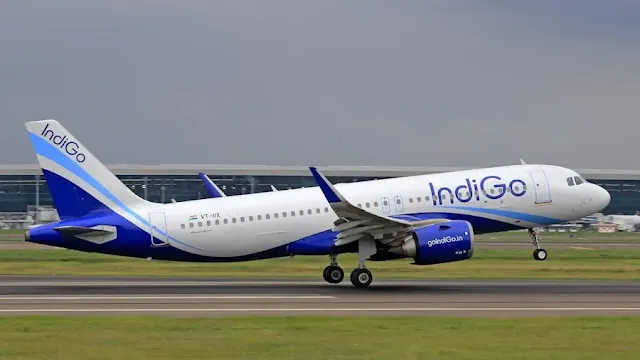Traveling often comes with unexpected challenges, like fitting all your belongings into a suitcase or avoiding hefty baggage fees. On a recent trip to Mumbai, I found myself with an overload of souvenirs that wouldn’t fit in my suitcase. Instead of buying an expensive new bag, I used a sturdy cardboard box from a local shop, securely taped and labeled. To my surprise, it worked perfectly as checked luggage, saving me money and stress. If you’re wondering whether cardboard boxes are a viable alternative to suitcases for flights, this guide explores their benefits, drawbacks, and airline rules to help you decide.
Table of Contents
Pros and Cons of Cardboard Boxes as Luggage
Cardboard boxes can be a practical alternative to suitcases, especially for checked luggage. Here’s a breakdown of their advantages and disadvantages:
Pros
- Cost-Effective: Cardboard boxes are inexpensive or even free if reused, unlike suitcases that can cost hundreds of dollars.
- Lightweight: Boxes typically weigh less than suitcases (7–12 pounds when empty), maximizing your weight allowance.
- Space-Efficient: Boxes can be shaped to fit odd-sized items, optimizing space within airline dimension limits.
- Easily Replaceable: If damaged, boxes are cheap and easy to replace compared to suitcases.
Cons
- Vulnerable to Damage: Boxes are prone to crushing, tearing, or water damage during handling.
- Less Secure: Even with tape, boxes offer less protection against theft or tampering than lockable suitcases.
- Extra Packing Needed: Fragile items require additional padding to prevent damage.
- Harder to Carry: Boxes lack wheels or handles, making them cumbersome to transport through airports.
For more insights, check this guide on using custom boxes or Reddit discussions on flying with boxes.
Understanding Baggage Allowances
Before using a cardboard box, check your airline’s baggage policies. Most airlines, such as Air India and IndiGo, allow cardboard boxes as checked luggage if they meet size and weight restrictions, typically 62 linear inches (length + width + height) and 50–70 pounds. Always confirm with your airline, as rules vary. For general guidelines, refer to the DGCA baggage rules.
Protecting Cardboard Boxes from Moisture
Cardboard boxes are susceptible to water damage, which can weaken their structure. To protect your box:
- Use waterproof liners or plastic bags inside the box to shield contents.
- Wrap the entire box in plastic wrap or use weather-resistant tape.
- Consider double-boxing valuable items for extra protection.
These steps ensure your items stay safe during transit, even in adverse conditions.
Packing and Wrapping Cardboard Boxes
Proper packing is crucial to ensure your cardboard box withstands airport handling:
- Choose a Sturdy Box: Opt for corrugated cardboard boxes for durability.
- Reinforce the Box: Use strong packing tape to seal edges and corners.
- Add Padding: Use bubble wrap, foam, or clothing to cushion fragile items.
- Label Clearly: Include your name, contact details, and destination on the box.
- Secure with Plastic Wrap: Wrap the box in plastic to protect against moisture and damage.
For packing tips, see Wikipedia’s guide on luggage packing.
Airline Rules for Cardboard Boxes
Most airlines accept cardboard boxes as checked luggage, provided they meet size and weight limits. For example:
- Air India: Allows boxes up to 62 linear inches and 50 pounds for economy class (Air India baggage guidelines).
- IndiGo: Permits boxes within 62 linear inches and 70 pounds, with proper sealing (IndiGo baggage policy).
Always verify with your airline, as some may require additional labeling or inspection. Check IATA’s baggage guidelines for international standards.
Types of Boxes for Flights
Not all cardboard boxes are suitable for air travel. Choose:
- Corrugated Cardboard Boxes: These are durable and resist crushing better than single-layer boxes.
- Double-Wall Boxes: Ideal for heavier or fragile items due to added strength.
Avoid flimsy boxes, as they may tear or collapse during handling. For more on box types, see Quora’s discussion on box durability.
Frequently Asked Questions
Do airlines accept cardboard boxes as luggage?
Yes, most airlines, including Air India and IndiGo, accept cardboard boxes as checked luggage if they meet size and weight requirements.
Can you use a box instead of a suitcase on a plane?
Absolutely, cardboard boxes are allowed as checked luggage, provided they are sturdy, properly sealed, and comply with airline guidelines.
Why do people travel with cardboard boxes?
Travelers use cardboard boxes for their low cost, lightweight nature, and ability to accommodate odd-shaped items, making them ideal for budget-conscious or one-time trips.
Does a cardboard box be allowed in a flight?
Yes, corrugated cardboard boxes are permitted as checked luggage if they meet airline size and weight limits and are securely packed.
What can I use instead of a suitcase?
Besides cardboard boxes, alternatives include duffel bags, backpacks, or plastic bins, depending on airline policies and your travel needs.
What size cardboard box can you take on a plane?
Most airlines allow boxes up to 62 linear inches (length + width + height) for checked luggage. Check with your airline for specific limits.
Using cardboard boxes as checked luggage can be a cost-effective and flexible solution for travelers. By choosing sturdy boxes, packing carefully, and following airline rules, you can save money and travel with ease. Check back for more travel tips!
When cardboard boxes are better than suitcases
Do India Airlines Reimburse for Damaged Baggage?
Lost Baggage in India: Time Limits and Compensation Rules
Damaged Baggage Compensation in India





















